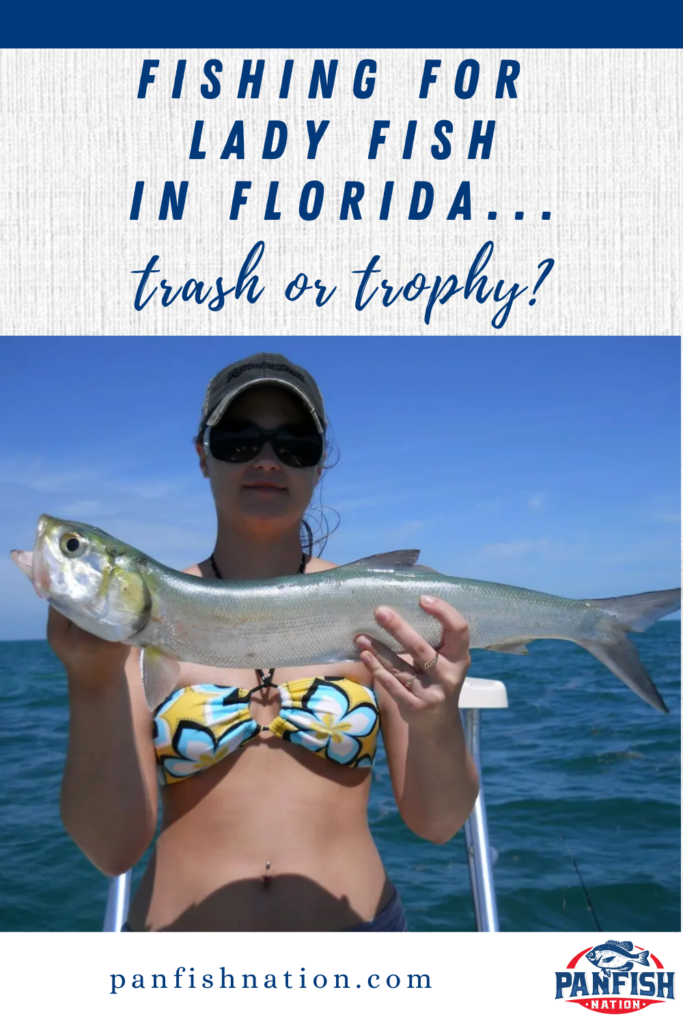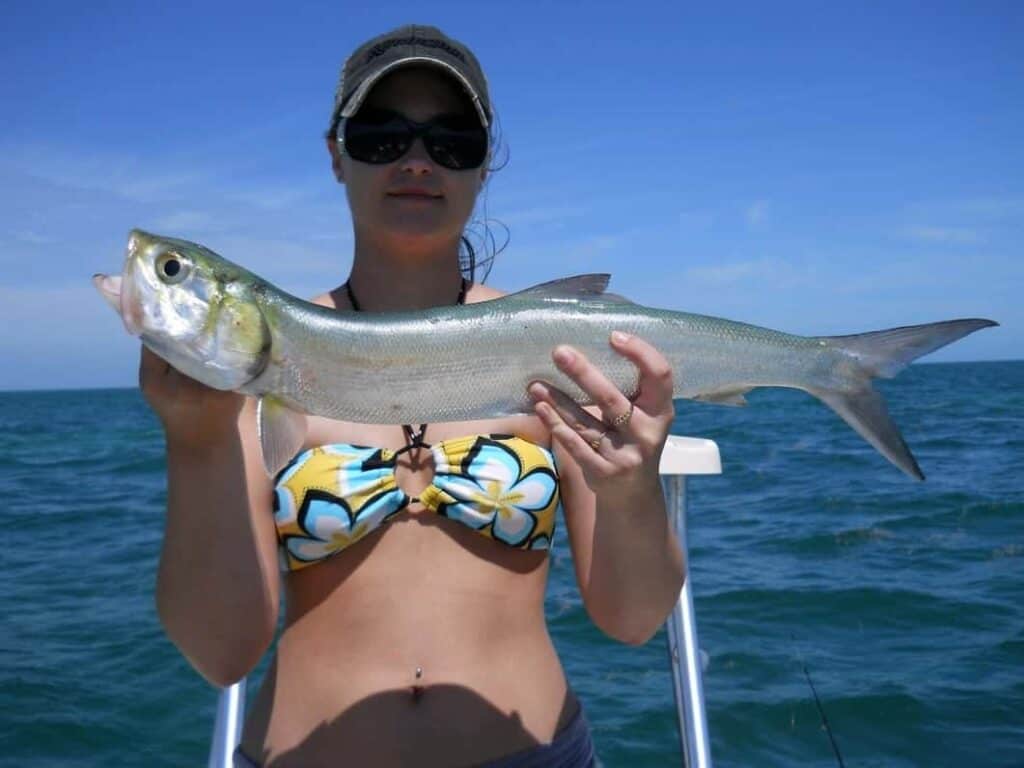
If you’ve been fishing long enough, you’ve like caught lady fish in Florida, or another state nearby. Some anglers love them, and other anglers hate them…but why?
In this article I’m going to dive into everything, you need to know about Ladyfish. How to catch them, biology, tips, tricks, and frequently asked questions.
This page contains affiliate links. As an Amazon Associate, I earn from qualifying purchases.
Table of Contents
How Do You Catch Ladyfish?
To catch ladyfish use flashy artificial lures such as silver spoons or chrome topwater plugs. Focus on areas with current or water flow, especially around bridges, docks, and other structures. Ladyfish are very active during dusk and into the night so don’t be afraid to fish after sunset.
Of all the species of saltwater fish that anglers can pursue, ladyfish are usually pretty easy to target and catch. This is due to their readiness to attack both live and artificial baits and their plentiful numbers in the warm coastal waters of the Atlantic Ocean and Gulf Of Mexico.
Best Tackle for Catching Lady Fish In Florida & Beyond
for catching ladyfish you’ll want to use inshore tackle. This usually means reels in the 2500-400 size range, paired with 12-16 lb test line.
For rods, this usually means anything in the 6 to 7-foot range, with medium power and medium to fast action.
Fishing for ladyfish usually requires a lot of casting, so be your using a rod and reel combo that is comfortable and lightweight, yet strong enough to handle ladyfish (or if your lucky something even bigger!).
To learn more about Rods and Reels, check out my guide on what I think is more important.
Best Lures For Ladyfish
1.) You simply can’t go wrong with a chrome silver spoon for catching ladyfish. This lure is very easy to use, simply cast it out and retrieve or troll it behind your boat or kayak.

The flashy silver appearance mimics a schooling baitfish which ladyfish cannot resist!
2.) Ladyfish often feed on or near the surface, so a topwater plug like the Yo-Zuri 3D Inshore Popper is always a good choice.

Use a walk-the-dog action, stop and go, or erratic retrieve to trigger bites. Ladyfish are notorious for ‘slashing at baits’ so if they miss the first time, hang on because they are probably going to circle back!
3.) Shrimp is one of the most common food sources for ladyfish and many other coastal species. When ladyfish are active and feeding at nighttime, an Egret 3.5 inch Vudu Shrimp under a popping cork is a deadly combination.

The best part about this lure is that you are just as likely to catch a snook, redfish, trout or even a tarpon. Almost all fish love shrimp!
Best Baits For Ladyfish
Ladyfish are opportunistic predators and not too picky when it comes to live or dead bait. If you can find ladyfish, chances are they will happily bite any of the following baits:
- Live Mullet
- Live Threadfin Herring
- Live Shrimp (my personal favorite)
- Live Sardines
- SIlversides
- Small crabs
Where to Catch Lady Fish in Florida & Beyond?
Inlets & Passes
The Southeastern United States is dotted with inlets and passes along its coastline. These manmade or natural ‘cuts’ are a sure-fire bet for ladyfish.
Usually, these waterways consist of a deep channel or pass that cuts in between two points of land. Some of them may be small, and others very large (such as shipping channels or ports).
In most cases, these inlets have a strong tidal influence which means lots of bait, lots of water flow and a variety of nutrients and species.
Check the local maritime charts in your area to see if any inlets, passes or cuts are in your area. Many times they have boat ramps nearby or public fishing piers. In my experience, these areas almost always hold ladyfish!
Coastal Flats
Coastal flats are grassy or flat bottom areas usually in 10 feet of water or less. These may be grass flats, sandy flats or mud flats all along the gulf coast states up in the lowcountry of the carolinas.
These coastal flats are often nuresiers for younger fish, including Ladyfish…but it doesnt mean that big ones areant nearby!
Look for clean water with some tidal movement. Cast adjacent to ledges, drop offs, color changes or seawalls. Ladyfish will often cruise along these ‘edges’ as they search for bait.
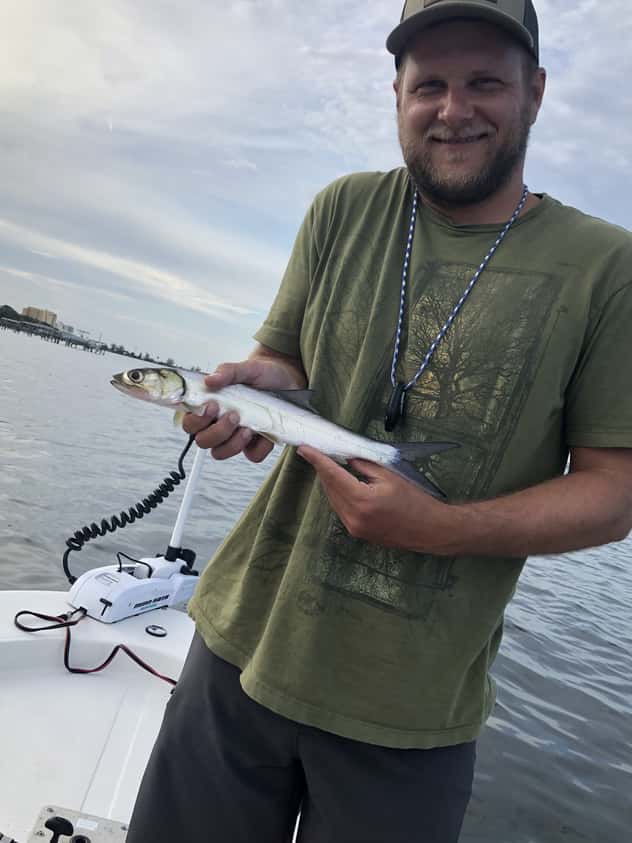
Structure
Ladyfish typically do not sit under structure like a snook or sheepshead, but they do hunt and feed along and near structure. Bridge pilings, causeways and docks are great places to look for ladyfish.
Keep an eye out for baitfish busting on the surface, especially near dock lights at night. Some of the best ladyfish action is around structure.
Offshore
If you really want to target BIG ladyfish you’ll need to get offshore. No, not 10 miles offshore but instead nearshore, along the beaches and coastal waterways.
Ladyfish live part of their lives offshore as they migrate to spawn. In these areas you can find ladyfish between 5-7 pounds, much bigger than their inshore counterparts.
Look for schooling baitfish and diving birds- cast a topwater plug into the mix and hang on!
About Ladyfish
Habitat: Ladyfish are primarily an inshore species, found in bays, estuaries, and coastal waters throughout the tropics. They are found common throughout Florida and even known to enter brackish waters such as the Indian River Lagoon.
Diet: Ladyfish are opportunistic and aggressive predators that primarily feed on schooling baitfish and crustaceans. Common food sources include silverside minnows, menhaden, mullet, shrimp, crabs, sardines, and threadfin herring.
Spawning: Ladyfish migrate offshore in mid-summer and spawn. Eggs are found throughout the Fall months in estuarine habitats such as mangrove flats and coastal beaches. Juveniles feed on small plankton and absorb nutrients through their skin. Adults reach 6-10 inches in size after the first year.
Frequently Asked Questions About Ladyfish
Is ladyfish good eating?
Ladyfish are widely considered to be poor table quality. The meat texture is very soft and oily with small bones. However they are edible, and some anglers do keep them for fish balls or soup.
How do you clean a ladyfish?
The easiest way to clean a ladyfish is to use a spoon to ‘scrape’ away the meat from the small bones.
Why are they called ladyfish?
The origin of the name ladyfish is unclear; many speculate the name comes from the long, slender body shape and silvery or flashy appearance.
Can you eat ladyfish raw?
Yes, you can eat ladyfish raw. However, it is not considered very appealing to eat. The meat is mushy with many small bones.
Do ladyfish have teeth?
Yes ladyfish have small rows of teeth but they are not considered dangerous to humans. Anglers should use a fluorocarbon leader when fishing for ladyfish.
Do ladyfish jump?
Yes, ladyfish are known for their jumps, spins, and even flips when hooked. They often make long runs of continuous jumps and skip across the surface.
How do you hold ladyfish?
The proper way to hold a Ladyfish is to first be sure your hands are wet. Next, cup your hands under the fish with one hand under the head area and the other under the tail. Do not overgrip the fish and always remove the hook before handling.
Is Lady Fish good for bait?
Yes, both cut ladyfish and live ladyfish are excellent bait for predatory fish such as snook, tarpon, sharks and redfish.
Is ladyfish fun to catch?
Ladyfish are a lot of fun to catch, especially for kids and beginner anglers. They are usually easy to find, and often they are in large numbers for non-stop action.
Is a skipjack a ladyfish?
Skipjack is another name for a ladyfish, but may also refer to a number of other species such as Skipjack Tuna or Skipjack Herring.
Is ladyfish a tarpon?
No ladyfish is not a tarpon, although they have earned the nickname “poor mans tarpon‘ for their acrobatic runs and jumps when hooked.
Conclusion
You’ll often hear seasoned or experienced anglers say that ladyfish are ‘trash fish‘ and this is usually because they can be a pest when targeting other species.
But I happen to think that ladyfish is a fun and enjoyable species of fish, especially for kids and beginner anglers. They are easy to catch, they put up a good fight on light tackle and they jump and spin and head shake like a baby tarpon.
As for eating? Well, I’ll let you be the judge on that one…but I will tell you that there are more desirable fish to eat than a ladyfish. In fact, I prefer delicious freshwater fish like Black Crappie! Thanks for reading!
If you haven’t guessed yet, I love fishing and everything about it!
To learn more about why I started Panfish Nation, visit the About page and follow along on Social Media:


Download a copy of my FREE Lure Color Selection Chart & Knot Guide!
Stay up to date with fishing reports, tackle reviews, industry news, and much more! We respect your privacy, unsubscribe at any time.
- Sauger vs Walleye: Learn These Differences and Catch More!
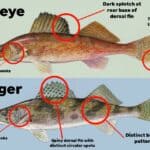
- How To Hold A Bluegill: Tips and Best Practices
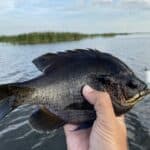
- How To Catch Wild Shiners For Bait (Step By Step W/Pics)
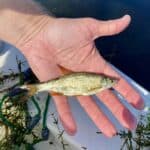
- Crazy Facts About the World Record Crappie

- What Size Hooks for Smallmouth Bass? Quick Guide

- Large and in Charge-Mouth: 10 of the Best Bass Lures of All Time (And Where to Buy Them)

Like this post? Save it on Pinterest.
